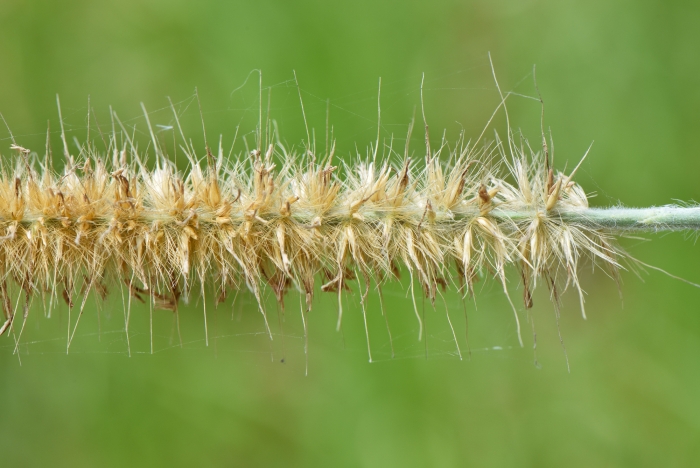Elephant Grass
(Cenchrus purpureus)
Elephant Grass (Cenchrus purpureus)
/
/

Cheng-Tao Lin
CC BY 4.0
Image By:
Cheng-Tao Lin
Recorded By:
Copyright:
CC BY 4.0
Copyright Notice:
Photo by: Cheng-Tao Lin | License Type: CC BY 4.0 | License URL: http://creativecommons.org/licenses/by/4.0/ | Rights Holder: Cheng-Tao Lin | Publisher: iNaturalist | Date Created: 2020-04-27T11:35:41-07:00 |













































Estimated Native Range
Summary
Cenchrus purpureus, commonly known as Elephant Grass, is a robust, deciduous perennial grass native to open woodlands, savannahs, and grasslands in Sub-Saharan Africa and the Seychelles. It can reach a height of 10 feet (3 meters) and a width of 3-5 feet (0.9-1.5 meters), forming dense, bamboo-like clumps. The plant features tall, sturdy stems and broad leaves, which can be used for fodder. Elephant Grass blooms with feathery, purple to brown inflorescences that are less showy than its foliage. It is valued for its rapid growth and adaptability to a range of soil conditions.
Elephant Grass is known for its low water and nutrient requirements, making it suitable for cultivation on marginal lands. It is used for soil fertility improvement and erosion control due to its extensive root system. In cultivation, it thrives in full sun and can tolerate a variety of water conditions, from dry to moist soils. It is often used in agricultural settings as fodder, particularly for dairy farming in East Africa, due to its high productivity and nutritional value. Additionally, it serves as a bioenergy crop, contributing to the production of bio-oil, biogas, and charcoal. While it has many benefits, Elephant Grass can become invasive outside its native range and should be managed carefully to prevent unwanted spread.CC BY-SA 4.0
Elephant Grass is known for its low water and nutrient requirements, making it suitable for cultivation on marginal lands. It is used for soil fertility improvement and erosion control due to its extensive root system. In cultivation, it thrives in full sun and can tolerate a variety of water conditions, from dry to moist soils. It is often used in agricultural settings as fodder, particularly for dairy farming in East Africa, due to its high productivity and nutritional value. Additionally, it serves as a bioenergy crop, contributing to the production of bio-oil, biogas, and charcoal. While it has many benefits, Elephant Grass can become invasive outside its native range and should be managed carefully to prevent unwanted spread.CC BY-SA 4.0
Plant Description
- Plant Type: Grass
- Height: 6-12 feet
- Width: 3-5 feet
- Growth Rate: Rapid
- Flower Color: N/A
- Flowering Season: Fall
- Leaf Retention: Deciduous
Growth Requirements
- Sun: Full Sun
- Water: Medium
- Drainage: Fast, Medium, Slow
Common Uses
Bank Stabilization, Bird Garden, Border Plant, Deer Resistant, Drought Tolerant, Erosion Control, Fire Resistant, Salt Tolerant
Natural Habitat
Open woodlands, savannahs, and grasslands in Sub-Saharan Africa and the Seychelles
Other Names
Common Names: Napier Grass, Uganda Grass
Scientific Names: , Pennisetum purpureum, Cenchrus purpureus, Pennisetum macrostachyum, Pennisetum benthamii, Pennisetum benthamii var. ternatum, Pennisetum pruinosum, Pennisetum purpureum subsp. flexispica, Pennisetum benthamii var. nudum, Pennisetum flavicomum
GBIF Accepted Name: Cenchrus purpureus (Schumach.) Morrone